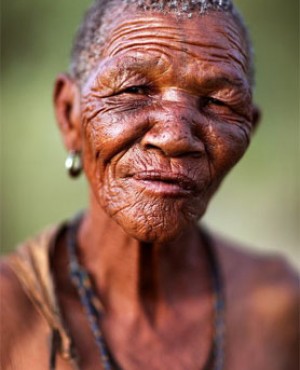
Cape Town – The San people of southern Africa are hunter-gatherers whose territory spans various nations. They are considered to be the oldest inhabitants of the region. According to researchers, they have lived in the area for at least 20,000 years. Throughout those thousands of years, they are known for their strong connection with their land as they maintain a great knowledge of the natural world.
The San are also known as Bushmen, but this name is rarely used nowadays because of its derogatory connotation. This term came from the Dutch word bossiesman, which means “bandit” or “outlaw.” Moreover, the ethnic people living in Angola, Botswana, Lesotho, Namibia, Zambia, Zimbabwe, and South Africa initially did not have a collective name for themselves and so they were labeled as the Bushmen, San, or Basarawa (in Botswana).
Khoisan and their Territories
The San people are a Khoisan-speaking community. They have a distinct linguistic form that can be observed even within their own communities. Those living in the northern regions and those in the southern regions may share some customs and practices but have unique structures when it comes to communicating in a particular dialect.
According to records, when the white settlers came in the mid-17th century, the country was already inhabited by three different groups, namely, the farmers (Bantu), the pastoralists (Khoikhoi), and the hunter-gatherers (San). These groups had their own language system, and the San even lived peacefully with the Nguni, which is a sub-language group of the Bantu speakers. When they intermarried, they incorporated the distinct characteristics of their respective native languages. However, because of the hunter-gatherers’ way of life, they cannot permanently settle in a particular place, which sparked great problems.
The lands serve as the home of the San, so they live according to the need for their basic necessities. Thus, the San fought against the Bantu, and later the Europeans, for their lands. Both times, the ethnic group was at a great disadvantage due to their low numbers and lack of weapons. During this period in their history, many fought to death instead of being captured because captured San were forced into slavery.
Life of the San Today
Given their history and cultural practices, the San face challenges as their lifestyle is perceived to be primitive. The people are struggling to meet expectations of other tribes to live like the cattle-herding tribes. In addition, they have trouble getting rights to their lands. In South Africa, for example, the Khomani have their land rights recognized, while the San tribes do not.
This situation hinders the tribe from continuing to live as hunter-gatherers in the region. The modern San people who continue to do so are considered to be at the very bottom of the social scale. The majority of them were even evicted from the Central Kalahari Game Reserve in 2002 because the government said that they had to provide basic services for the people, like schools and medical facilities to help the San move into modern society. However, these propositions to engage the communities and truly provide them with the proper assistance are yet to fully materialize.
Image from Dietmar Temps, https://www.flickr.com/photos/deepblue66/



